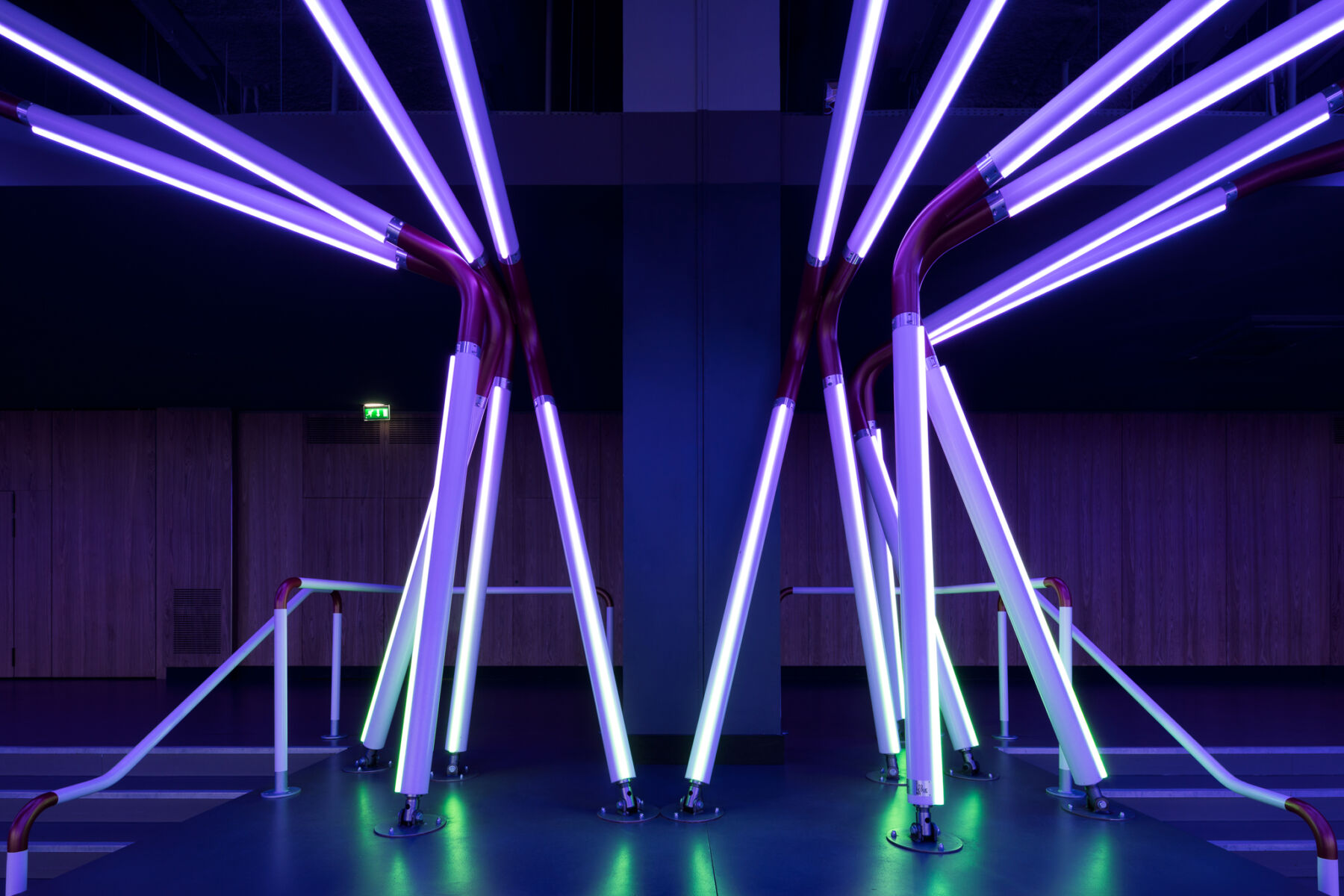Interview by Daniela Silva
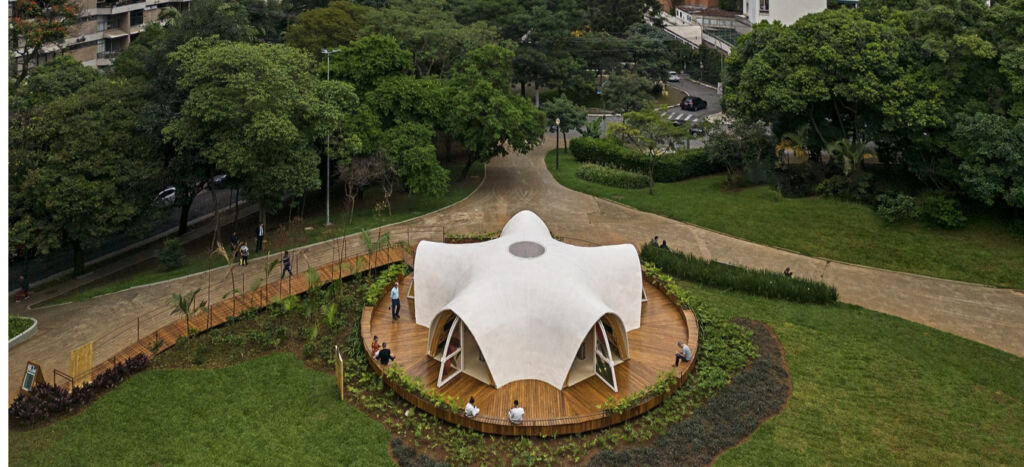
Guto Requena is an architect, designer, and thought leader whose work is a captivating blend of technology, emotion and design. Drawing on an innovative approach, Guto has successfully integrated the digital world with the physical environment to create experiences that engage the senses and connect people to spaces in new and unexpected ways.
Born in Brazil, Guto’s career has been marked by a constant pursuit of experimentation and a refusal to be confined by traditional boundaries. Educated in architecture and urban planning, he has utilized his background to explore the intersections between design, human behaviour, and emerging technologies.
One of Guto’s pioneering achievements is his work in emotion-based design, where he utilizes cutting-edge technology to capture human emotions and transform them into tangible design elements. By leveraging tools like artificial intelligence, biometric sensors, and data analytics, he crafts spaces that respond to and reflect the emotional state of the occupants, creating a symbiotic relationship between the individual and the built environment. This approach significantly departs from traditional design methods, aligning architecture more closely with human psychology and emotional needs.
His architectural firm, Estudio Guto Requena, is renowned for its innovative projects, many of which have received critical acclaim both nationally and internationally. Guto’s work extends beyond traditional architecture, encompassing interior design, interactive installations, and digital art. He has designed everything from residences and commercial spaces to immersive installations that leverage interactive technology to engage the public in thought-provoking ways.
Among his standout projects is the Dancing Pavilion, an interactive structure designed for the 2016 Olympic Games in Rio de Janeiro. This unique pavilion used sensors to capture the movements and emotions of the dancers within, translating them into a stunning visual display on the building’s façade. The project was a powerful testament to Guto’s ability to blend technology and emotion, creating a space that was not just a building but a living, breathing entity.
Guto’s approach also extends to the field of sustainable design. With a deep respect for the natural environment and an understanding of a designer’s social and ecological responsibilities, his work often incorporates eco-friendly materials, energy-efficient technologies, and strategies that minimize environmental impact.
In addition to his architectural and design work, Guto is a frequent speaker, writer, and educator, sharing his insights and ideas with the next generation of designers and thinkers. His TEDx talks and lectures at various institutions worldwide demonstrate his passion for exploring the future of design and his commitment to challenging conventional wisdom.
Guto Requena’s work represents a bold fusion of design, technology, and emotion. His projects challenge our understanding of what architecture can be and offer a glimpse into the future of how we may live, work, and interact with our surroundings. Whether crafting a residence that resonates with the occupant’s feelings or creating an installation that responds to collective emotions, Guto’s work continually pushes the boundaries, making him one of the most intriguing and innovative designers of our time.
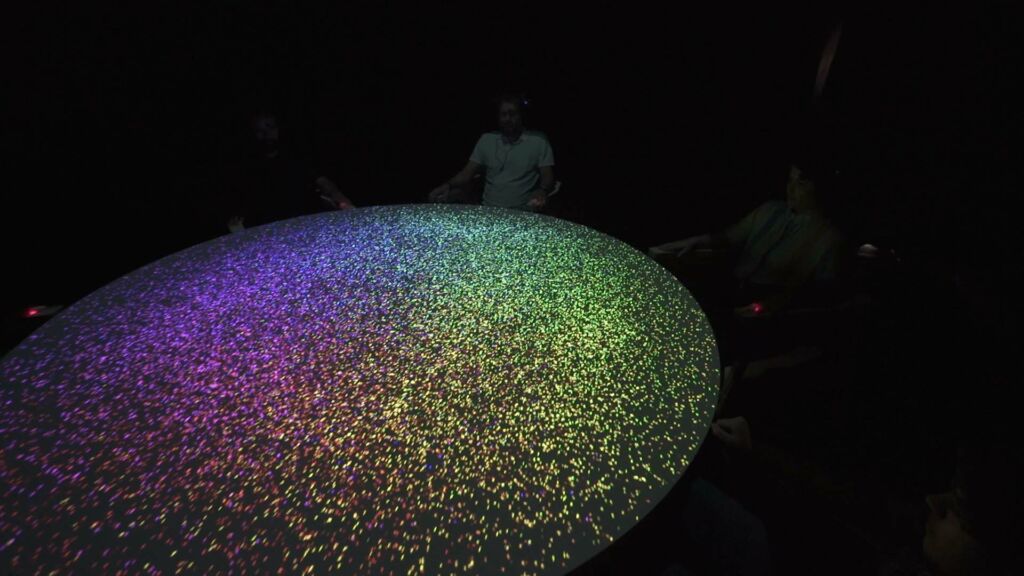
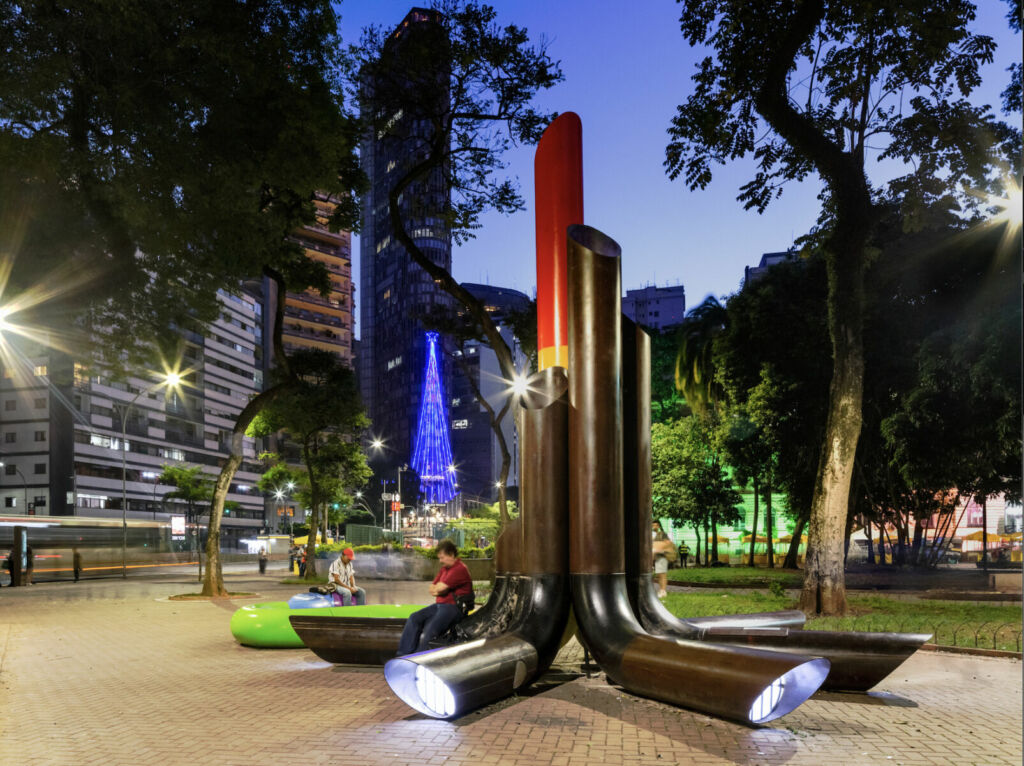
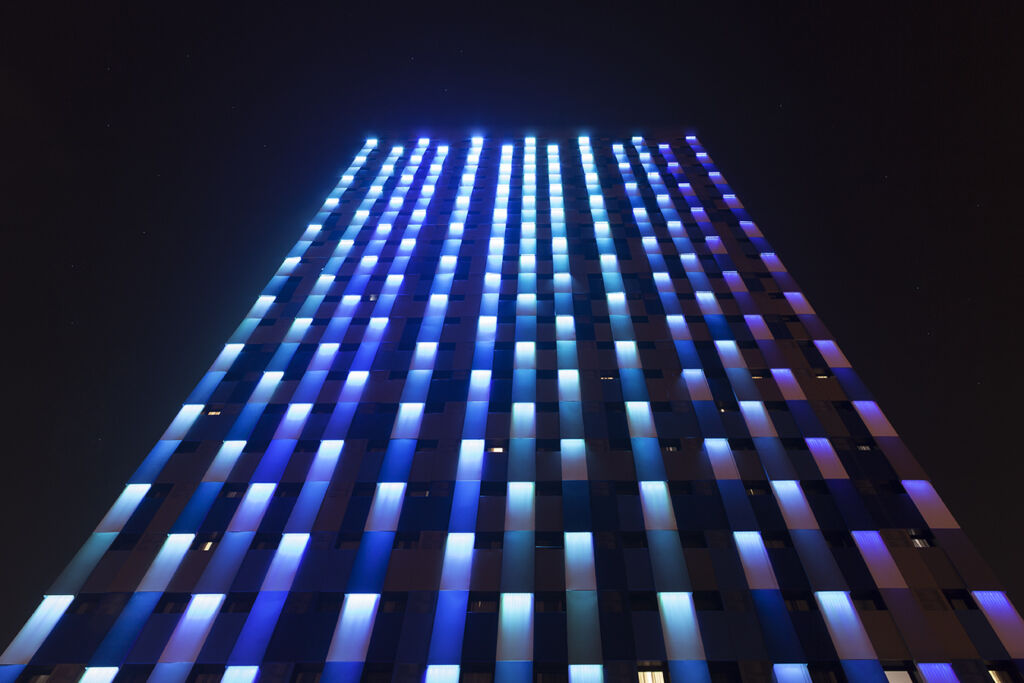
Your work often explores the intersection of technology, empathy and architecture. How did you become interested in this field, and what do you hope to achieve through your work in this area?
Yes, I believe that the main purpose of our studio lies in connecting architecture, empathy, and technology, which leads to innovation and sustainability.
I feel that I’m part of the first generation of architects that grew up with the integration of digital technologies into architecture during my university years. Consequently, it’s now impossible for me to view architecture solely through the prism of traditional materials like bricks, concrete, and glass.
For me, architecture is more than that. It’s about designing and experiencing spaces through a hybrid approach, blending analogue and digital elements. Alongside concrete materials, we add a digital layer comprised of sensors, microcontrollers, LED lights, and network cables. This digital aspect is tangible and, combined with the physical, creates a new hybrid reality.
During my university years, I was guided by incredible professors and architects who emphasized the importance of materials, shape, form, function, Fluxus, and analysis in architectural projects. But in the last ten years, I realized that empathy was a missing and vital ingredient. I now emphasise it to my students and incorporate it into all of my projects from the start.
I often ask myself and my students: ‘Is it possible for architecture to stimulate empathy? Can it foster community and connection, encourage eye contact, smiles, or even start conversations?’ This is a crucial component, and it’s strongly connected to the new experiences we can create using digital technologies.
One of my primary goals is to create an architecture that can be seen as empathetic and stimulating, fostering affection and collectiveness. These are the main ideas behind the projects I’m designing, and we can also add sustainability to that vision.
It’s now been four years since we decided not to use concrete anymore. We want to create a type of architecture from renewable sources like timber, wood, bamboo, and earth. I’m really excited about this moment, as this is the future to me: creating a hybrid architecture using new digital technologies while utilizing materials that are ancestral, like earth, bamboo, and wood.
This is the future to me. It’s the combination of both worlds.
Your projects frequently incorporate interactive elements, such as responsive lighting or sound. How do you approach the design of these elements, and what role do they play in the overall experience of your installations?
For almost nine years back in the university, I was researching; I was a researcher in this research group called Nomads, which is the Center for Interactive Living Studies at the University of Sao Paulo. So, I started my graduation in 1999 and started my work as a researcher in 2000. Being part of the researchers researching a group of nomads gave me a sense of how these digital technologies were supposed to change everything we understand from society, from urbanism to architecture and design.
For almost ten years, I was a researcher, and I was doing my research about the impacts of digital technologies on architecture. What happened is that when I started my practice, I finally could start researching and applying this research right in my projects. So, I was very curious about experimenting with sensors, actuators, microcontrollers, Arduino, and LED lights; again, all these materials allow us to create this interactive, responsive, emotive architecture. And now, finally, I built a portfolio.
Six years ago, I realized a big dream of my life since I was a student: creating a laboratory for technologies inside an architecture studio. So now we have this Juntx Lab – Laboratory for Studies of Empathy, Design and Technology.
Now I have, as part of my fixed team, computer scientists, hardware developers, and software programmers. And I understood that together with architects and designers when we have this truly diverse and multidisciplinary team, we can go deeper in the concepts. We can discuss the project from the beginning, and I feel that the projects are getting increasingly deep and adult.
So, my big purpose, of course, is to create new experiences where we can deal with empathy, affection. And, of course, these are the main goals when you think we live in an era of hate. More than ever, talking about love, it’s a major issue. And it’s a major issue for architects, designers and newborn planners.
I can give you two examples of how this digital element plays in the overall experience of my installation:
1. The Love Project: It’s almost like an obsession. I’ve been developing this project for almost ten years now, since 2014. Basically, I invite people to narrate a big love story of their lives. I plug sensors in their body, like a heartbeat sensor, brain activity, and voice recognition sensor. Through these three different sensors, while they are narrating a big love story of their lives, I’m interested in collecting the biofeedback, the bio-data that the body produces while you are emotional.
I input this data into a 3D printer machine, so I can 3D print objects where the shape literally comes from the biofeedback from this emotional data. So, it’s a way of making tangible something that is intangible. The final result is more than the object; this entire experience allows people to cry, think, and reflect on their own lives and what love matters. It has been an incredible experience because the final result is amazing, and people get really emotional.
Once, I was doing one of what I call this Art Design performance, the love project in the art gallery, I saw this cathartic moment where almost everybody was crying and holding each other and very emotional. I saw that very special moment, that cathartic moment, as a turning point in my life because that was designed, that was architecture combined with technology, and this is what I want to dedicate my life to.
2. The Dancing Pavilion: This is an architecture scale, a club for the Olympic Park at the Olympic Games 2016 in Rio de Janeiro. We developed this club, a temporary architecture pavilion made by rotating mirrors and motors that rotate these mirrors according to the sensors that collect emotions on the dance floor.
The more people clap their hands, dance, sing, or hold each other, the group of sensors on the dance floor collect this data and rotate this mirror, creating different patterns and graphics. It was like a loop, like feedback. People are getting emotional, and then the architecture is getting emotional itself, and then people start screaming, and then the architecture reacts. It was such an incredible experiment to see the power of architecture to create this empathetic and incredible new kind of experience in architecture.
Your project Rhizomatic Grid for the TERMINAL 7 club is an interactive installation that explores the relationship between humans and technology. Can you describe how the installation works and what you hope users take away from the experience?
Designing a club is very special to me because clubs have historically been safe spaces. They are places that hold safety for communities such as the queer and black communities. A club is a place where, for a couple of hours, we can dream and forget the problems of the outside, real world. That’s why I love thinking about clubs.
From this perspective, we’ve designed ten clubs in cities like São Paulo, Rio de Janeiro, New York, and Paris, and we have a new one coming up in Lisbon. One example is Terminal 7 in Paris, where I created a Rizomatic Grid, a huge sculpture that functions as a grid. People dance inside this grid, and it brings me back to my very personal childhood memories.
Being an only child without brothers or sisters, I remember finding my safe space under the trees, especially as a queer kid. That’s where I felt secure enough to draw and play. So now, in designing my very first club in Paris with an incredible view of the Eiffel Tower, I decided to tap into those memories to create a sense of safety.
I designed a grid using an algorithm that simulates trees growing. Conceptually, I planted five seeds, allowing five trees to grow and interconnect at the top. This became the final result, the concept for a massive light installation. The final result is incredible.
Recently, I had the opportunity to visit Paris and experience the club once it was completed. It was a powerful feeling to be inside the grid, looking at the DJ, and seeing how the light sculpture connected different points on the dance floor. It’s a big club with space for 2500 people to dance.
What’s unique is that it doesn’t matter where you are on the dance floor. The shape and lighting create an interconnected experience where you can see others around you. It shifts the focus from an individual experience to a more collective one, which, to me, is the power of technology in club design.
The Love Project is an immersive audiovisual experience that explores the concept of love. Can you describe the creative process behind this project and what inspired you to explore the theme of love in this way?
It’s a very special project for me. Indeed, after the Love Project was a great success, we won prizes and travelled worldwide with it. But we wanted to make something more accessible and commercial to make this project more democratic. That’s when we created an app called Aura pendant.
Let me write down the name for you: Aura Pendant. It’s essentially a simplification of the love project experience. The process is simple: download the app, plug in your earphones, close your eyes, take a deep breath, and narrate a big love story.
As you’re narrating your love story, the app analyzes the emotions in your voice while simultaneously collecting your heartbeat by having your finger on the camera. Through these sensors, we generate a mandala, a small pendant that you can wear close to your heart. It can be 3D printed in gold, silver, or rose gold. This project makes something intangible tangible, a beautiful concept that has received amazing feedback.
You might wonder why I’m so interested in this topic. Sure, it can sound a little cheesy or tacky, but it’s more important than ever to talk about love, something I’ve been doing for over 10 years. When we invite people, regardless of their country, religion, age, or colour scheme, to close their eyes and narrate a love story, whether it’s about a parent, romantic partner, child, or even a pet, something wonderful happens.
When you close your eyes and think about love, your body produces so much data. It’s just fantastic, showing that we’re all connected as human beings. In an era of increasing divisiveness, projects like this are vital to remind us of our shared humanity and that love matters.
In our work, whether in product design, architecture, interior design, or installations, we’ve tried to incorporate parametric design and algorithms along with various sensors. We’ve developed and researched sensors that monitor heartbeats, brain activity, voice, sweat, and more. These sensors add an incredible layer to our projects, creating new experiences that were never done before.
I firmly believe that these types of experiences stimulate your cognition, engaging your brain and creativity from different angles and perspectives. It’s all part of our ongoing exploration and celebration of human connection and love.
How do you stay ahead of new trends and integrate them in a rapidly changing technological world into your work? Do you have any practices or routines that help fuel your innovative thinking?
Yes, that’s a good question. What I do involves trying to travel as much as possible to experience different realities and meet diverse people. My biggest inspiration comes from humanity itself and from nature.
While I’m very technologically inclined and cosmopolitan, I find joy in connecting with nature. Whether it’s exploring the rainforest in Brazil, visiting the Amazon, experiencing waterfalls, or simply spending time at the beach, I find this to be an incredible way to connect with the future.
Recently, I’ve added a new ingredient to this perspective. As I’ve become more technological, I find myself increasingly intrigued by the concept of ancestrality. This makes sense to me, especially given my roots in Brazil and recent research on the Global South, particularly in regions like Latin America, Africa, and India.
These nations face similar challenges concerning the rapid growth of cities and the social inequalities prevalent in these parts of the world. But there’s also a strong connection to spirituality and ancestrality in these regions. It’s not surprising to see developments in 3D-printed biodegradable architecture from these countries, as they have a rich tradition of working with earth and biodegradable materials.
I’m currently at a stage where I’m fusing my work with digital and interactive technologies with these ancient notions. I’m exploring materials like bamboo, wood, and earth and studying the indigenous community’s ways of development, work, and social understanding.
I firmly believe that to build the future. We must look closer to the past. We need to understand that the future is deeply rooted in the ancestral.
Finally, what projects are in the works for the future, and what new ideas or technologies are you excited to explore?
OK, so there are lots of perspectives for the future. We are a multidisciplinary studio engaged in various exciting projects. For example, we are developing 3D-printed objects, with a significant focus on 3D printed biodegradable furniture and architecture. Our research in this area is substantial and groundbreaking.
I’m passionate about communicating design. I have my own show on Netflix, and I’m working on a new one, exploring the innovative research conducted in various countries. I like to approach all of these new projects with optimism for the future. If there’s hope for the future, we must focus on the people and projects inspiring that hope. Naturally, I want to be part of this movement.
In addition to the above, we’re working on some remarkable architectural projects. My very first museum design is underway in the South of Brazil. The entire structure is crafted from Earth that we collected from the site, incorporating Timberwood.
I’m also developing my first residential project, constructed entirely from Timberwood, making it a highly sustainable endeavour. Our growth is exciting as we are scaling up and attracting clients who are interested in sustainability and technology.
Our reach is expanding internationally as well. We’re creating interactive urban installations in Napa, CA, and my first interior design project is a restaurant in New Delhi, India. There’s also a lot happening in Brazil. The increasing demand for our services shows that clients recognise our commitment to working with sustainability and cutting-edge technology.
What’s your chief enemy of creativity?
That’s a difficult one. I would say that the enemy of my creativity is sometimes time. Because time passes by so fast, I feel there is so much to do.
You couldn’t live without…
I couldn’t live without diversity, and this is the main topic if you and I want to talk about the future and innovation. So, every time I go for a lecture, a conference, or, you know, when people invite me to talk about the future, give workshops and so on, the first thing to me, and the most important thing, is not the technology itself; it’s diversity. We have to guarantee that there is only innovation if there is diversity in the teams.
Suppose you arrive in a place that promises to make things diverse or sorry. In that case, that is promising to focus on the future or innovation, and there are only white people, there are only men, and there is no queerness; you can be sure there is no innovation going on.
So, to me, more than ever, it’s the major topic to make sure that my studio, my projects, and hopefully my clients have true diversity. This is the only way we can face the future.

